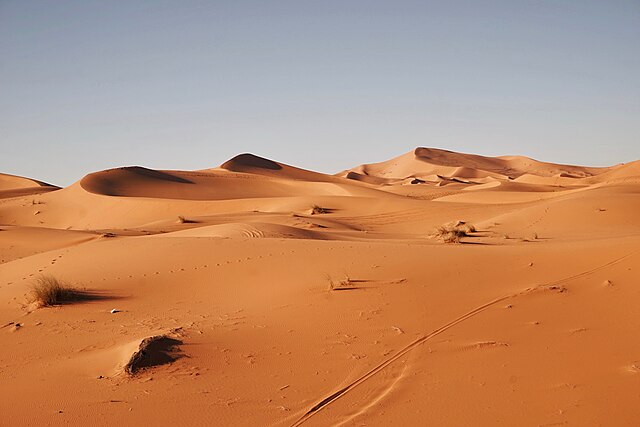
Why Did The Sahara Become A Desert?
When you look at the vast, arid landscape of the Sahara desert, you may find it hard to believe that this was once a lush, green space full of grasses, trees and lakes. Yet this is likely the case. It has been called the North African Humid Period, and occurred around 12,000 years ago during the late Pleistocene and Holocene geological epochs.
The Sahara And The Procession
There is good paleoclimatological evidence to suggest that over the last 3,000,000 years, there have been 230 of these North African Humid Periods (NAHPs), indicating that the Sahara region alternates between arid phases (as present) and humid phases, which are full of rivers, vegetation and lakes. According to an article in Nature Magazine online, these NAHPs are governed by a phenomenon known as the Procession Cycle, which is when a wobble occurs in the orientation of the Earth’s axis of rotation. Thereafter, you might imagine the planet as a slightly off-centre spinning top. This off-centre rotation continues for a period of around 25,000 years. Procession is an additional form of planetary motion to the more well-known daily rotation and annual revolution cycle of the Earth. It is caused by the gravitational tidal force of the Sun and Moon acting on our planet’s equatorial bulge. There is a good visual of this rotational phenomenon here on Wikipedia.
The wobble itself is known as an Axial Procession, and it makes seasonal contrasts more extreme in one hemisphere and less extreme in the other. Not only does the procession cycle govern the seasonal contrasts, it determines temperature and precipitation variance between seasons. During the periods of increased Boreal Summer Insolation (when solar radiation hits the Earth’s northern hemisphere between March and September), the African Monsoon systems are intensified. It is these precipitation-rich phases of the procession cycle that underpin the North African Humid Periods.
The Shifting Sands Of Time
This article in the Geographical explains how the most recent incarnation of the dry version of the Sahara came about. Around 12,000 years ago, the end of the ice age led to a wetter climate in the region, possibly due to low-pressure areas forming over collapsing ice-sheets in the north. But, once these ice sheets melted, the Northern Sahara region dried out. However, monsoon conditions in the South meant that the Southern Sahara region was wetter. But, eventually this monsoon retreated south (as part of the procession cycle) and the entire Sahara region become desert. This is the incarnation of the Sahara you see today.
When will this cycle end, then? Well, not for a while. Experts predict that the Sahara will revert back to that lush green alternative state in about 10,000 years.
If you are interested in studying Geography or a Science, Oxford Open Learning offers you the chance to do so at a variety of levels, listed below. You can also Contact Us here.